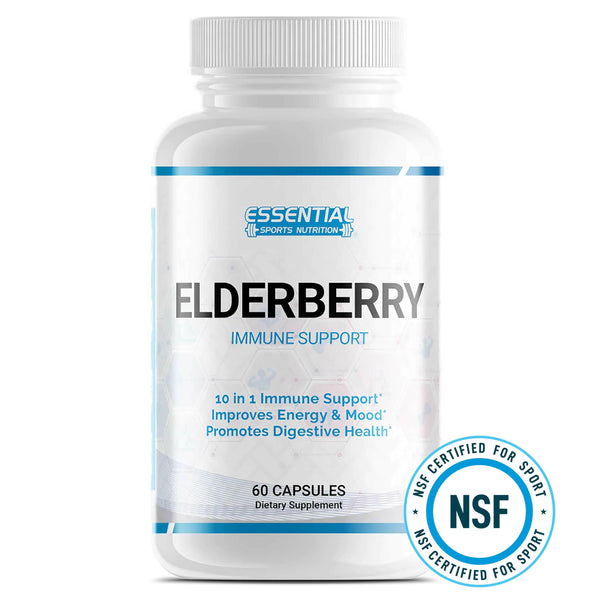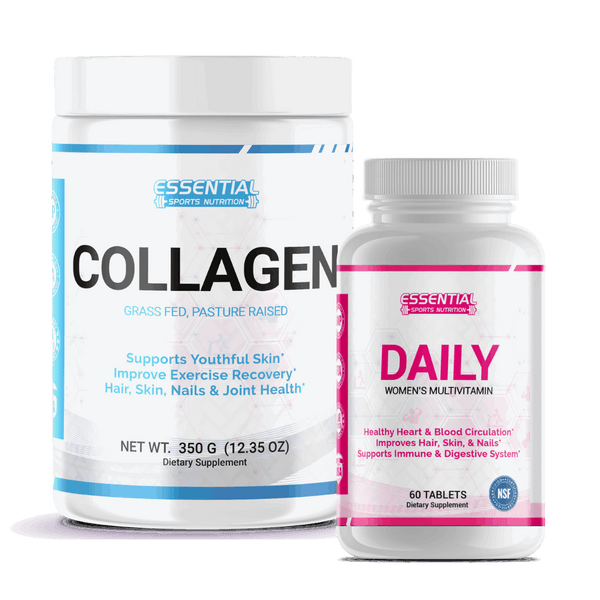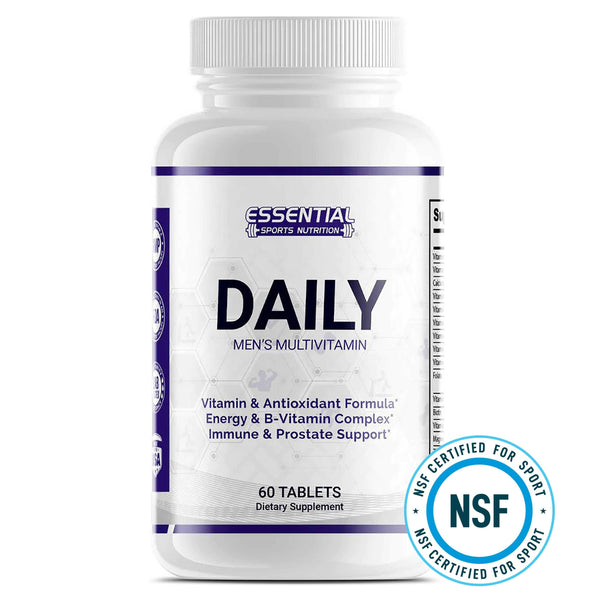Vitamin Victory: Revolutionary Diet Changes to Increase Nutrient Absorption!
To improve your vitamin absorption through diet, start by cooking your vegetables lightly; steaming or sautéing helps preserve essential nutrients. Incorporate healthy fats like olive oil, nuts, or seeds when eating fat-soluble vitamins (A, D, E, and K) to enhance their absorption. Pair sources of vitamin C, such as oranges or strawberries, with iron-rich foods like spinach to boost iron uptake. Adding fermented foods like yogurt or sauerkraut, rich in probiotics, supports nutrient digestion. Complement these strategies with prebiotic-rich foods like asparagus or bananas to nourish your gut microbiome. Each step brings you closer to optimal health through smarter, balanced dietary decisions.

Key Takeaways
Pair fat-soluble vitamins (A, D, E, K) with healthy fats like olive oil for enhanced absorption.
Combine iron-rich foods like spinach with vitamin C sources such as oranges to boost iron uptake.
Include probiotics from yogurt and prebiotics from bananas to improve nutrient absorption and gut health.
Opt for cooking methods like steaming to preserve the vitamins in vegetables and fruits.
Consume complementary protein sources such as rice with beans to ensure a balanced intake of essential amino acids.
Choose Appropriate Cooking Methods
How can you maximize vitamin retention in your meals? Choosing the right cooking methods is essential. Exposing foods to high temperatures and prolonged cooking can degrade sensitive nutrients to a great extent, particularly B-complex vitamins and vitamin C. Instead of boiling or baking, which often leads to substantial nutrient loss, opt for steaming or lightly sautéing your vegetables and fruits. This preserves vitamins better and also keeps the flavors fresh and vibrant.
When you steam, make sure to wait until the water is boiling before adding your food. This practice helps in minimizing the cooking time and improves nutrient retention. Additionally, cutting foods into larger chunks rather than smaller pieces reduces the surface area exposed to heat and water, further conserving the vitamins within.
Combine Fat-Soluble Vitamins With Fats

To maximize the absorption of vitamins A, D, E, and K, it's essential you pair them with the right fats. Including dietary sources like olive oil or avocados can greatly enhance the uptake of these nutrients. We'll explore which fats are most effective and the overall health benefits of these combinations.
Optimal Fat Pairings
Pair fat-soluble vitamins like A, D, E, and K with healthy fats such as olive oil, nuts, and seeds for ideal nutrient absorption. Research shows that the bioavailability of these vitamins increases greatly when consumed with fats. This is because fat-soluble vitamins need dietary fat to be effectively absorbed by your body. Let's make it practical:
| Vitamin | Healthy Fat Pairing |
|---|---|
| A | Avocado |
| D | Flaxseeds |
| E | Olive oil |
| K | Nuts |
Dietary Sources of Fats
Understanding the best sources of dietary fats can help you maximize the absorption of vitamins A, D, E, and K. Healthy fats are essential in transporting these fat-soluble vitamins through your digestive system, improving their utilization by your body. Consider incorporating sources like nuts, seeds, and olive oil into your meals. These not only enhance flavor but also boost vitamin absorption effectively.
For instance, adding a sprinkle of sunflower seeds or a drizzle of olive oil over leafy greens can elevate the nutrient profile of your dish. Similarly, a dollop of sunflower butter in a smoothie can help absorb vitamins A and D from other ingredients. Pairing these fats with vitamin-rich foods is key to optimizing your nutrient intake.
Health Benefits Overview
Combining fat-soluble vitamins with dietary fats greatly enhances your body's ability to absorb these essential nutrients, offering numerous health benefits. By incorporating sources of healthy fats, such as olive oil, nuts, and seeds, you guarantee better utilization of vitamins A, D, E, and K. Drizzling olive oil on salads or adding a spoonful of sunflower butter to a glass of milk can markedly maximize the absorption of these nutrients. This practice optimizes the benefits you get from your meals and supports overall health and wellness. Adding just a little fat to meals containing fat-soluble vitamins can substantially affect how effectively your body uses these crucial nutrients.
Optimal Vitamin Pairings

To maximize your body's iron uptake, consider pairing vitamin C-rich foods with plant-based iron sources. Studies, like those published in the American Journal of Clinical Nutrition, have shown that this enhances absorption to a great extent. This nutrient synergy isn't just beneficial—it's essential for boosting your iron levels, particularly if you're consuming non-heme iron from plant-based foods. Non-heme iron, found in foods like lentils, spinach, and other leafy greens, is less readily absorbed by your body than in animal products.
Adding a squeeze of lemon juice to a spinach salad or enjoying a glass of orange juice with your morning oatmeal can significantly enhance iron absorption. Vitamin C acts as a powerful promoter of iron absorption, converting iron into a form that's easier for your body to use. This optimizes your nutrient intake and supports overall health by improving hemoglobin production and reducing the risk of anemia.
Introduce Probiotics and Prebiotics

Incorporating probiotics and prebiotics into your diet can greatly enhance your body's ability to absorb essential vitamins and minerals. Probiotics are beneficial bacteria that support digestive health and aid in nutrient absorption. You'll find these probiotics in fermented foods like yogurt, kefir, kimchi, and sauerkraut. Eating these foods introduces beneficial bacteria into your gut, which is critical for breaking down nutrients and making them easier for your body to use.
Conversely, prebiotics are fibers that the human body cannot digest. They serve as food for probiotics and are found in foods such as bananas, onions, garlic, asparagus, and whole grains. By consuming prebiotics, you're nurturing your gut microbiome, ensuring it's well-populated with healthy bacteria.
Together, probiotics and prebiotics work synergistically to promote a healthy gut environment, improving digestive health and optimal nutrient absorption. This dynamic duo creates a balanced microbiome, which is essential for extracting maximum nutritional value from your diet. So, to boost your nutrient absorption, make sure to include a mix of probiotics and prebiotics in your daily meals. This simple step can impact your overall health by optimizing how your body processes vitamins and minerals.
Consider IV Vitamin Drips

While traditional dietary methods offer various benefits, IV vitamin driaps provide a direct and efficient route for nutrient absorption, delivering essential vitamins right into your bloodstream. When you consume food, the body must break it down extensively, which can sometimes lead to less than ideal absorption of nutrients. Supplements, including Vitamin C-rich foods or those enhancing Vitamin D helps, can boost this process, yet the efficiency can vary based on individual digestive health.
IV vitamin drips circumvent these issues by injecting nutrients into your bloodstream, bypassing the digestive system entirely. This method guarantees that your body absorbs a higher concentration of vitamins, making it especially beneficial if you have conditions that impair nutrient absorption or want to address specific deficiencies tailored to your nutrient needs.
Customizing IV drip therapy allows precise control over which nutrients you receive and in what amounts, optimizing the potential health benefits. Whether you're looking to enhance your overall nutritional intake or target specific health goals, considering IV vitamin drips could be a practical addition to your health regimen, ensuring you receive the essential nutrients your body needs to function at its best.
Explore Complementary Protein Sources

Exploring complementary protein sources, such as pairing rice with black beans, guarantees you receive all the essential amino acids necessary for excellent health. Combining different food items is important for ideal nutrition and enhances vitamin absorption, ensuring that your body gets the most out of the nutrients you consume.
By understanding how to pair protein sources effectively, you'll ensure a balanced intake of amino acids, which are the building blocks of a protein critical for your body's functioning. For example, when eaten together, hummus and crackers provide a complete protein profile. This strategy is especially important if you're following a plant-based diet.
To help you get started, here's a practical table illustrating some effective combinations to meet your daily requirements and achieve overall health benefits:
| Protein Source 1 | Protein Source 2 | Resulting Benefit |
|---|---|---|
| Rice | Black Beans | Complete Amino Acid Profile |
| Hummus | Crackers | Balanced Intake of Amino Acids |
| Nuts | Legumes | Enhanced Vitamin Absorption |
| Grains | Seeds | Ideal Nutrition |
| Mixed Vegetables | Quinoa | Overall Health Benefits |
Focus on Iron and Vitamin C

Knowing which foods are rich in iron is essential to maximizing your iron intake. Vitamin C's benefits extend beyond immune support; it greatly enhances iron absorption when paired with plant-based sources like lentils or spinach. Adding a squeeze of lemon or orange juice to these iron-rich meals will enhance your body's ability to utilize the nutrients effectively.
Iron-Rich Foods List
Incorporating iron-rich foods like spinach, lentils, and quinoa into your diet is essential for preventing iron deficiency anemia. To boost iron intake further, include iron-fortified cereals, tofu, and pumpkin seeds. Cooking your meals in cast iron cookware can also increase the iron content of your food. Opting for heme iron sources such as lean meats and seafood will enhance iron absorption more effectively than non-heme iron sources.
Pairing these iron-rich foods with vitamin C sources like oranges, strawberries, and bell peppers is important as vitamin C enhances iron absorption. This strategic combination ensures you maximize the benefits of the nutrients you consume, helping you maintain healthy iron levels and overall health.
Benefits of Vitamin C
While vitamin C is widely known for its immune-boosting effects, it's also essential in enhancing iron absorption, especially from plant-based sources like spinach and lentils. By incorporating foods rich in vitamin C, such as lemon or orange juice, you're not just enjoying a rejuvenating twist on your meal but also optimizing your body's ability to utilize non-heme iron. This synergy is crucial for preventing deficiencies and improving overall health outcomes.
| Food Source | Nutrient | Benefit |
|---|---|---|
| Spinach + Lemon Juice | Plant-based Iron + Vitamin C | Enhances Iron Absorption |
| Lentils + Orange Juice | Non-heme Iron + Vitamin C | Prevents Deficiencies |
| Mixed Salad + Lemon Dressing | Mixed Nutrients + Vitamin C | Optimizes Nutrient Utilization |
Enhancing Iron Absorption
You'll enhance your body's iron uptake by pairing iron-rich foods with sources of vitamin C, a practice supported by numerous studies. For instance, combining spinach with strawberries or adding bell peppers to a lentil salad can greatly boost the absorption of plant-based iron. Vitamin C converts this type of iron into a more easily absorbed form, optimizing your iron intake. Including vitamin C-rich foods like oranges or tomatoes in your meals enhances iron absorption and helps prevent iron deficiency. This is particularly crucial if you rely on plant sources for iron. So, for better health, always remember to pair these nutrients with your meals.
Understand Fat and Vitamins

To optimize your health benefits, it is important to pair fat sources with fat-soluble vitamins like A, D, E, and K. These vitamins are best absorbed when consumed alongside fats, particularly unsaturated fats found in foods like nuts, seeds, and olive oil. Incorporating such fats into your diet can greatly enhance the uptake of these important nutrients, reducing the risk of deficiencies that could lead to serious health risks.
For example, a tasty and effective way to boost vitamin absorption is to combine sunflower butter with milk, which helps absorb vitamins A and D. This pairing satisfies your taste buds and ensures that your body receives the maximum benefit from these nutrients.
Here's a quick reference table to guide your food choices:
| Vitamin | Ideal Fat Source |
|---|---|
| Vitamin A | Olive oil, Sunflower butter |
| Vitamin D | Sunflower butter, Milk |
| Vitamin E | Nuts, Olive oil |
| Vitamin K | Seeds, Olive oil |
Evaluate Vitamin Supplement Forms

When choosing a vitamin supplement, it's important to consider its form, as this can greatly impact how effectively your body absorbs the nutrients. Vitamin supplements come in various forms, such as gummies, pills, liquids, and powders, each with different absorption rates. Studies have specifically looked at the absorption efficiency of vitamin C, finding notable differences based on the supplement forms.
Liquid supplements are often regarded as being absorbed more quickly than tablets or powders. This is because the liquid form bypasses the need for dissolution that solid forms must undergo in the digestive system. However, if you're considering pills, be aware that coatings can affect the absorption process. Some coatings are designed to protect vitamins from being destroyed by stomach acid, yet this can also delay the release of the active ingredients, potentially reducing absorption efficiency.
Despite these findings, there's no unanimous scientific consensus on which form is superior for all vitamins. Hence, it's important to consider your health needs and consult with a healthcare provider to choose the right vitamin supplement that maximizes absorption and benefits your health.
Conclusion

Imagine your body as a finely tuned machine, thriving on the right fuel combinations. You're enhancing vitamin uptake by grilling salmon to preserve its omega-3s or tossing spinach with olive oil, like a gardener nurturing soil for peak growth. Adding a yogurt with live cultures can further boost this effect, ensuring each nutrient is absorbed efficiently. Embrace these strategies to transform your meals into a powerhouse of vitamin synergy, supporting your health with every vibrant, flavorful bite.
Increase Vitamin Absorption and Sources of Vitamin C FAQs
Q: What are some good food sources of vitamin C?
A: Eating foods like citrus fruits, strawberries, kiwi, bell peppers, and broccoli are good food sources of vitamin C.
Q: How does the form of vitamin C impact absorption by the body?
A: The form of vitamin C can impact its bioavailability, with some forms being more easily absorbed by the body than others.
Q: What is the connection between diet and health regarding vitamin absorption?
A: A healthy diet rich in fruits and vegetables can help increase the absorption of vitamins, including vitamin C.
Q: Why is it important for the body to absorb vitamin C?
A: Vitamin C plays a crucial role in immune function, collagen production, and as an antioxidant, so adequate absorption is essential for overall health.
Q: What are some ways to increase the absorption of vitamin C from foods?
A: Pairing vitamin C-rich foods with sources of iron can enhance absorption, and avoiding cooking methods that destroy the vitamin can help retain its potency.
Q: How can vitamin D and calcium affect the absorption of other vitamins?
A: Adequate levels of vitamin D and calcium are important for overall nutrient absorption, including that of vitamin C and other vitamins.
Q: How does vitamin C deficiency affect overall health and nutrition?
A: Vitamin C deficiency can lead to symptoms like fatigue, weakened immune function, and impaired wound healing, highlighting the importance of maintaining adequate levels of this essential vitamin.
Q: What Foods Improve the Absorption of Vitamins?
A: Pair vitamin C with plant-based iron and combine vitamin D with calcium-rich foods to boost vitamin absorption. Also, cook tomatoes with olive oil and add black pepper to turmeric.
Q: How do you Make Your Body Absorb Vitamins Better?
A: You can enhance vitamin absorption by pairing specific foods, such as vitamin C, with iron, turmeric, and black pepper. Eating fats with vitamins A, D, E, and K also improves uptake.
Q: How Do You Fix Poor Nutrient Absorption?
A: To remedy poor nutrient absorption, you should pair specific foods to enhance uptake: vitamin C with iron, turmeric with black pepper, and fats with fat-soluble vitamins. These combinations improve overall nutrient efficiency.
Q: What Blocks Vitamin Absorption?
A: While you're savoring that juicy steak, remember that certain cooking methods, like high heat, can hinder vitamin absorption. Opt for steaming or light sautéing to guarantee you get the most from your meals.























